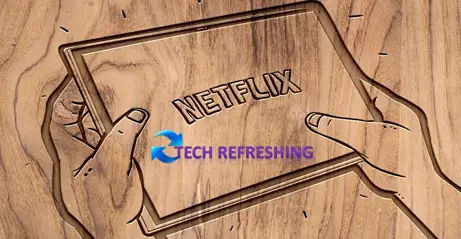Netflix Kicks Off Password Sharing Crackdown with New Fees
Netflix, the world’s largest subscription streaming service, has rolled out new fees in four countries – Canada, New Zealand, Portugal and Spain – that charge accounts for sharing their membership outside of one household. The move comes as intense competition has started to dent Netflix’s once unflagging growth, with nearly all of Hollywood’s major media companies investing billions of dollars into their own streaming operations.
Higher Fees in First Wave of Countries
The extra member subaccount fees in Canada, New Zealand, Portugal and Spain ask subscribers whose membership is being used beyond one primary location to pay extra for one or two subaccounts. The fees are C$8 a month in Canada, NZ$8 in New Zealand, 4 euros in Portugal and 6 euros in Spain. The company has not specified a timeline for when other countries, like the US, would launch the fees.
The fees in the latest countries are meaningfully higher than in the Latin American countries where the fees were first tested. The average fee for an extra member subaccount in Chile, Costa Rica, and Peru was priced at roughly 25% the cost of a Standard plan in each country, on average. In the latest countries, Netflix set the fee for extra members at 43% the price of a Standard plan versus 25% in the tests.
End of Free Password Sharing
For many years, Netflix had a relaxed approach to password sharing, even encouraging it through statements like “love is sharing a password” from the company and comments from founder Reed Hastings in 2016 expressing his appreciation for account sharing. However, with declining subscriber numbers in the past decade, Netflix began experimenting with ways to generate revenue from password sharing. In addition to the new fees for extra member sub-accounts, the company has also introduced lower-priced subscriptions with advertisements to appeal to individuals who may not be willing to pay full price for the service.
Netflix’s Dominance of Streaming Video
Netflix’s dominance of streaming video has led nearly all of Hollywood’s major media companies to invest billions of dollars into their own streaming operations, resulting in a wave of new services like, Apple TV Plus, HBO Max, Paramount Plus and Disney Plus. The flood of streaming options has complicated how many services you must use and pay for to watch your favorite shows and movies online.
Guess on Fees in the US
The cost of these additional charges has not been disclosed by the company in the US, although it is anticipated to be around $7.50 per month on average. This is based on the typical fee for an additional member subaccount, which was priced at about 25% of the cost of a Standard plan in the Latin American nations where the fees were originally tested.
The move by Netflix to crack down on password sharing is seen as a response to the intensifying competition in the streaming industry. Over the past few years, nearly all of Hollywood’s major media companies have launched their own streaming services, including Disney Plus, HBO Max, Peacock, Paramount Plus and Apple TV Plus, creating a flood of streaming options that has complicated how many services viewers must use (and pay for) to watch their favorite content online.

Netflix hopes to regain some of its lost revenue from password sharing by introducing these new fees for extra member subaccounts. It is believed that over 100 million of the company’s 230 million global subscribers share passwords, resulting in lost revenue. By charging for additional accounts, Netflix aims to encourage users to have their own individual accounts, thus reducing the lost revenue caused by password sharing.
The decision to implement these new fees has faced criticism from some consumers. They have expressed their disappointment with the higher prices for extra member subaccounts in the latest countries, compared to what was charged during the trial period in Latin America. The fee for extra members in Canada, New Zealand, Portugal and Spain is now, on average, 43% of the cost of a Standard plan, which is a significant increase from the 25% charged during the initial tests.
In other nations where they have not yet been implemented, it is still unknown how the new levies will be welcomed. The Company has not said when the levies will go into effect in the US and other countries. However, the high costs in Canada, which is thought to be a market strongly connected to the US, implying that the costs in other nations may also be high.
Conclusion
Netflix has introduced new fees for extra member subaccounts in Canada, New Zealand, Portugal, and Spain in an effort to curb password sharing. The fees are meant to encourage users to have their own individual accounts and reduce the lost revenue caused by password sharing.
The company has not yet specified when the fees will be rolled out in other countries, including the US, but the high fees in Canada may suggest similarly high fees in other nations. The move is seen as a response to the growing competition in the streaming industry, where multiple new services have made it more complicated for viewers to access their favorite content. The decision to implement the new fees has faced criticism, but Netflix aims to regain some of its lost revenue through this change.


